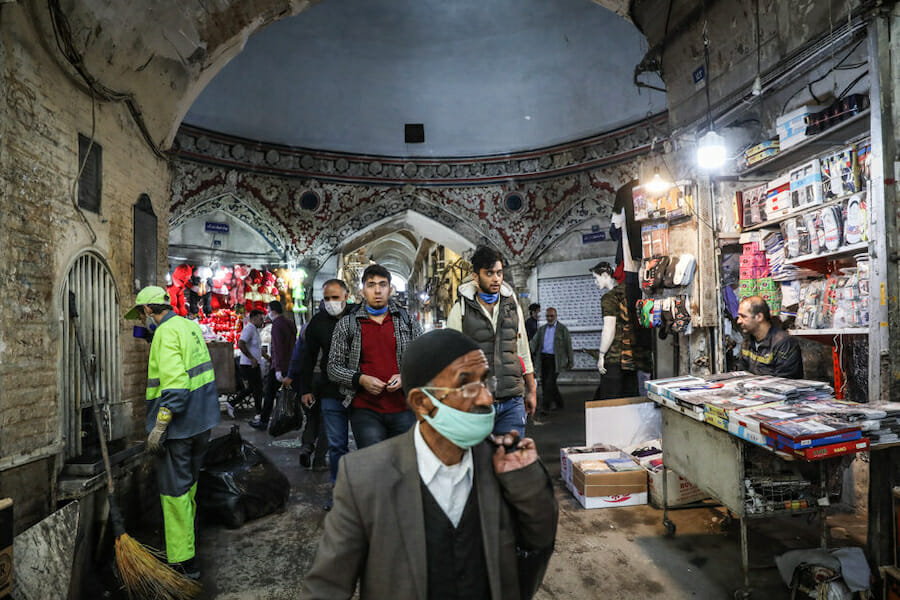
Iran’s Struggle to Contain COVID-19
The COVID-19 pandemic has touched virtually every corner of the globe, with regions reacting to the pandemic in very different ways. Humans aren’t really rational creatures, and often political and cultural factors can have just as much of an impact on public health policy as available information, expertise, and access to resources. In the midst of the COVID-19 epidemic, we are seeing markedly different national and sub-national level approaches, as national and regional governments use their available resources, knowledge, and value systems to combat the virus.
Seeing as how experts warn that this is likely not the last major pandemic we will see in our lifetimes, it is important to learn from this experience in ways that countries can apply to future outbreaks.
Iran became a local epicenter of COVID-19 quite early in the pandemic, probably due to its strong political and economic ties with China. It is an interesting case study to examine, as it has a strong political presence in the Middle East and has a population of almost 85 million people. This, coupled with its very conservative Islamic government highlights two main issues concerning COVID-19. One is that what happens in Iran is likely to affect its neighbors. The other is that the decision-making process of the government in response to the crisis will be one in which both religious and political factors may play a high priority, in some cases competing with the needs of public health and infection prevention.
Iran declared its first two cases of COVID-19 on February 19 in Qom. Within just a few days, there were numerous other cases throughout the country. The pandemic is dealt with nationally by the Ministry of Health and Medical Education (MOHME), who have established the National Committee on COVID-19 Epidemiology. As of mid-March, there was evidence of the government rapidly expanding cemeteries and constructing mass burial pits.
As of May 27, the country has had over 141,500 cases and around a 6% death rate. Currently, there seems to be a sharp increase of COVID-19 patients with gastrointestinal symptoms rather than respiratory symptoms, which is making counting the prevalence of the virus more difficult. Though the country was on a partial lockdown that had slowed the spread of COVID-19, it reopened at the end of April, resulting in a second surge of cases.
Iran is home to one of the largest populations of urban refugees in the world, creating an additional challenge for infection control measures. Over 3 million people are displaced people in the country, mostly from Afghanistan, and mostly in urban settings. Whenever there is a large population of displaced people it creates complex challenges for infection control measures to be implemented. Refugees often normally don’t have permanent housing, have limited access to resources important for infection control such as access to clean water or healthcare, and often live in conditions where they cannot avoid coming into contact with other people.
Analysis of measures taken by crisis management
Iran’s government decided to reopen the country despite warnings from health experts that it did not meet the criteria for deconfinement (including the widespread availability of testing and contact tracing as well as a longer period of a decrease in new cases). The ensuing uptick of cases obviously means that Iran reopened too soon. The lack of government response to the last few weeks increase in cases is also worrying, and many people cannot afford to stay home if the government requires people to go back to work. From an economic perspective, it a difficult decision for the government to remain closed as the country’s economy is already heavily affected by U.S. sanctions.
Iran has come under heavy criticism from numerous experts for underreporting the prevalence and death toll of COVID-19. The deputy health minister has been quoted as admitting to this issue, and some scientists are working to assess the effect of infection control interventions while taking underreporting into account.
From a global perspective, tragically, but unsurprisingly, political motivations have further gotten in the way of fighting COVID-19 in the region. Despite international criticism, the U.S. blocked Iran’s request to the International Monetary Fund for a $5 billion loan to help control the spread of the virus in the region. This is unwise for a number of reasons. Jeff Seldin, in Voice of America, writes: “Iran’s response to the coronavirus transformed the country into something akin to a viral amplifier or repeater.”
It is crucial to implement IPC (infection, prevention and control) measures and increase public communication campaigns that encourage people to restrict their movements. Since the Iranian government relaxed the country’s lockdown, there has been an increase in cases. This is happening despite reports that cases are grossly underreported, meaning that the actual situation for COVID-19 in the country is far worse.
Experts have suggested that Iran’s difficulty containing COVID-19 may create a “ripple effect” across the region and contribute to further political instability. This highlights the importance of increasing public health measures. It also would be good to support infection control efforts by putting a premium on a culture of transparency.

